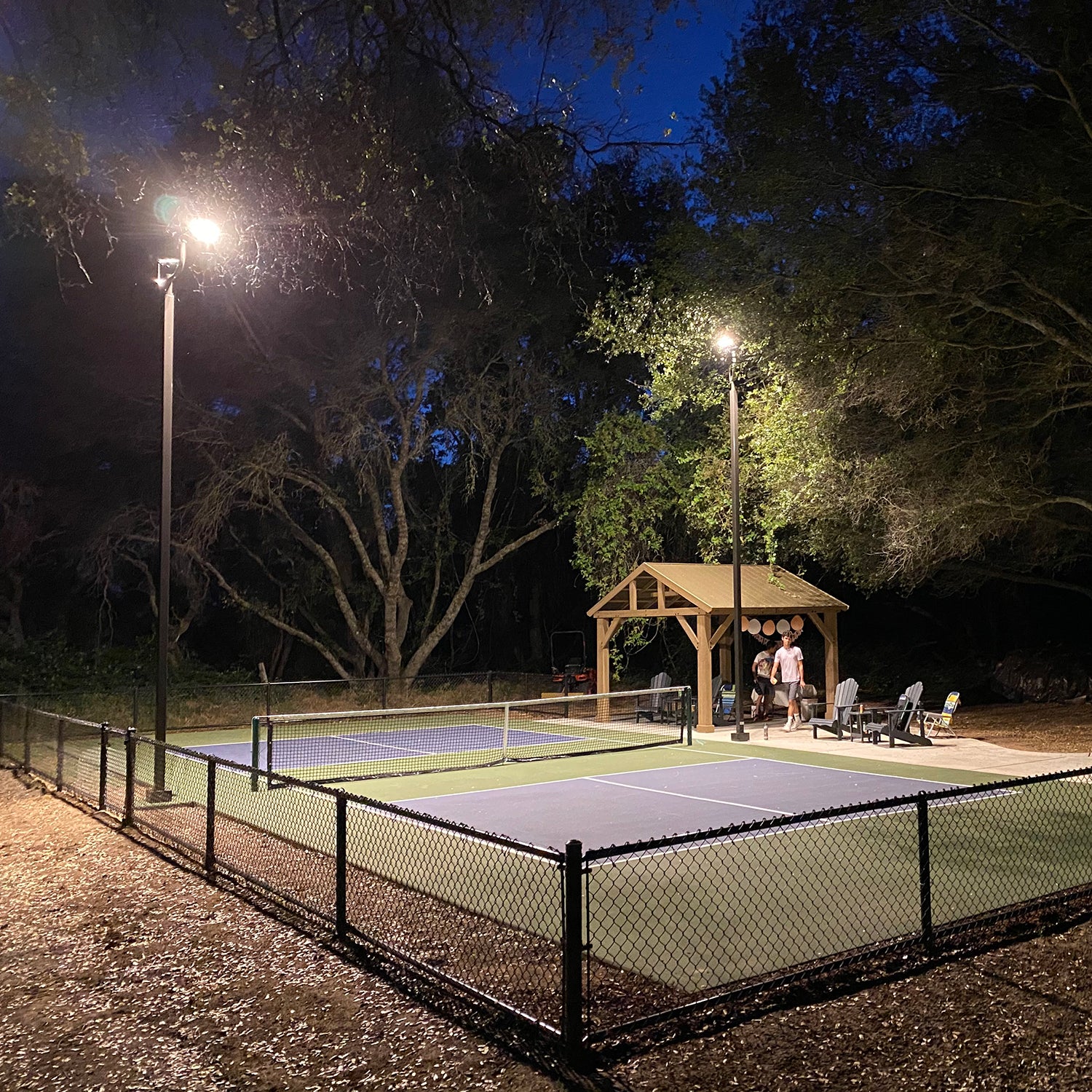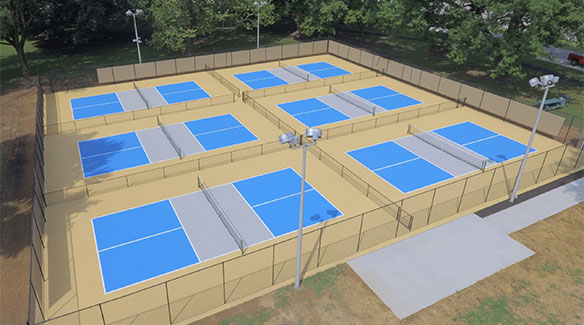Navigating Rules for Pickleball Court Building in Your Location
Building a pickleball court in your area requires a nuanced understanding of different neighborhood regulations, consisting of zoning regulations, structure licenses, and safety standards. Involving with regional authorities and the area is critical for making certain compliance and promoting support.
Understanding Regional Zoning Laws
When considering the construction of a pickleball court, understanding regional zoning laws is important to ensuring compliance and preventing possible lawful concerns. Zoning regulations dictate how land can be made use of and commonly consist of specifications pertaining to leisure facilities. These regulations can vary substantially by municipality, influencing factors such as court placement, dimension, lighting, and sound degrees.
Prior to launching construction, it is necessary to seek advice from the neighborhood zoning board or planning division to establish the details policies that use to your building. Specific areas may restrict leisure activities, while others might require particular authorizations or adherence to particular standards. It is additionally crucial to think about troubles, which figure out just how far frameworks need to be from property lines or various other buildings.
In addition, exclusive growths, such as property owner associations (HOAs), might enforce their very own rules regarding the construction and use of pickleball courts. Comprehending these laws can avoid pricey adjustments or lawsuits down the line. Involving with local stakeholders and community members can supply beneficial insights and foster assistance for your project, making certain that it aligns with the community's demands and expectations.
Getting Necessary Structure Allows
Just how does one browse the intricacies of acquiring necessary building permits for a pickleball court? The procedure starts with recognizing neighborhood policies and demands stated by community authorities. Typically, you will require to submit a thorough site strategy that describes the proposed court measurements, materials, and layout. This strategy should follow zoning laws and any specific policies concerning leisure facilities.

Once permits are acquired, it is critical to adhere to any type of evaluation timetables and needs throughout the building stage. Keeping communication with regional authorities will certainly facilitate a smoother authorization process and help stay clear of prospective setbacks. By completely preparing and comprehending the allowing landscape, you can effectively browse the complexities involved in creating a pickleball court while staying compliant with all regional guidelines.

Assessing Environmental Impact
A comprehensive assessment of environmental effect is essential when intending the building and construction of a pickleball court. This analysis aids determine possible effects on regional ecological communities, water resources, and community visual appeals. Secret factors to think about consist of site choice-- making sure that the court is not built on environmentally sensitive land, such as wetlands or habitats for threatened types
Soil security and water drainage patterns ought to be assessed to avoid erosion and water merging, which can adversely influence surrounding plants and wildlife. In addition, the choice of materials is important; going with environmentally friendly and sustainable options minimizes ecological damage.
The execution of effective stormwater administration practices is one more vital element, as it helps mitigate overflow and sedimentation. Engaging with regional environmental companies can provide useful insights into laws and best practices certain to your area.
Finally, neighborhood input can be valuable in understanding any kind of regional ecological problems and promoting support for the job. By carrying out a detailed ecological effect analysis, stakeholders can guarantee that pickleball court building and construction lines up with sustainable methods and contributes positively to the community's eco-friendly health and wellness.
Abiding By Security Specifications
Guaranteeing conformity with safety requirements is vital for the successful building and construction and operation of a pickleball court. Complying with well established safety and security laws decreases the danger of injuries and accidents, ensuring a safe environment for players.
Key safety standards include appropriate court dimensions, surface area products, and illumination demands. The court must satisfy the main look here measurements of 20 feet large by 44 feet long for increases play, with appropriate barrier zones to stop injuries from errant spheres. Pickleball court construction. The surface area needs to be constructed from non-slip products to enhance grip and minimize the browse around this site chance of drops
In addition, lights must suffice for night play, providing consistent lighting to avoid shadows that can prevent exposure. Neighborhood building regulations might also dictate particular needs for fence and net elevation to make certain player safety and protect against unapproved accessibility to the court location.
Normal evaluations and upkeep are necessary to promote these requirements in time. By prioritizing security compliance, court proprietors not only safeguard players however additionally promote a positive track record within the community. This commitment to safety and security can motivate greater participation and satisfaction of the sport, ultimately contributing to its development and sustainability.

Involving the Area in Preparation
Neighborhood involvement in the preparation phases of pickleball court building and construction can significantly enhance the task's overall success. Engaging regional homeowners and stakeholders cultivates a feeling of ownership and motivates collective decision-making, which can result in broader assistance for the campaign.
To successfully involve the neighborhood, coordinators should initiate public meetings or workshops, providing a platform for residents to articulate their viewpoints and choices concerning area, layout, and amenities. Surveys and comments kinds can also be used to collect understandings from a broader target market, making certain that diverse perspectives are taken into consideration.
Furthermore, forming an area advising board can assist in continuous conversations and click this address worries throughout the planning process. This board can include reps from various demographics, such as regional schools, recreational companies, and community organizations, consequently intensifying neighborhood depiction.
Effective interaction is vital; updates concerning the job must be regularly shared via newsletters, social networks, or local bulletins. By focusing on neighborhood engagement, planners can cultivate excitement, reduce possible opposition, and produce a pickleball center that truly reverberates with regional values and demands. This joint technique not only enhances the project yet additionally strengthens area connections.
Final Thought
Finally, browsing the complexities of pickleball court building necessitates an extensive understanding of regional policies, including zoning regulations, building authorizations, and safety and security standards. Conducting ecological evaluations is essential to mitigate eco-friendly influence, while area involvement can improve assistance for such jobs. By adhering to these guidelines and cultivating collaboration, successful execution of pickleball courts can be accomplished, advertising leisure opportunities and area health. Proceeded persistance in these areas will make certain sustainable and compliant growth.
Creating a pickleball court in your area calls for a nuanced understanding of numerous neighborhood guidelines, including zoning laws, building licenses, and safety requirements.When taking into consideration the building of a pickleball court, recognizing local zoning laws is crucial to making sure compliance and preventing potential legal problems. By completely preparing and understanding the allowing landscape, you can effectively browse the intricacies involved in creating a pickleball court while remaining certified with all regional regulations.
In verdict, browsing the complexities of pickleball court building requires a comprehensive understanding of local laws, including zoning laws, building licenses, and security standards. By sticking to these guidelines and cultivating collaboration, successful application of pickleball courts can be accomplished, advertising leisure opportunities and community well-being.